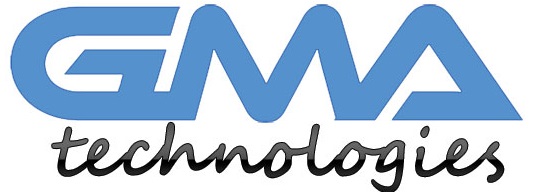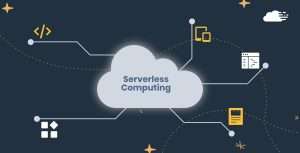Welcome to the future of computing, where you can develop applications without any infrastructure hassle! Say goodbye to managing servers and tedious maintenance tasks because serverless computing is here to revolutionize the way we build and deploy software. Whether you’re a developer seeking greater efficiency or a business owner looking for cost-effective solutions, this blog post will unveil the wonders of serverless computing and how it empowers us to focus solely on creating remarkable applications. Get ready for an exhilarating journey into a world without infrastructure constraints – let’s dive in!
Introduction to Serverless Computing
Serverless computing is a hot topic in the world of cloud computing. But what is serverless computing? In this article, we’ll give you a rundown of what serverless computing is, its benefits, and some of the tools you can use to get started with developing applications without the infrastructure hassle.
Serverless computing is aArchitecture where the cloud service provider runs the server, and dynamically manages the allocation of machine resources. cloudy platform that enables developers to build applications without provisioning or managing servers. You simply upload your code and the cloud service provider handles all of the Infrastructure-as-a-Service (IaaS) and Platform-as-a-Service (PaaS) for you. This means no more worrying about server CPU usage, memory leaks, or patching vulnerabilities.
What are the benefits of using a serverless architecture? First, there’s no need to provision or manage any servers, which greatly reduces operational costs. Second, since there’s no need to worry about capacity planning or scaling issues, development teams can focus on building features and functionality instead of infrastructure concerns. Because serverless architectures are event-driven, they can automatically scale up or down to meet demand, which further reduces costs and improves efficiency.
There are many different tools available to help developers get started with serverless computing including AWS Lambda, Google Cloud Functions, and Azure Functions. In this article, we’ll focus on AWS Lambda since it’s the most popular and widely used serverless framework on the market. With AWS Lambda, developers can upload their code to the cloud service and it will be automatically executed in response to events or web requests.
Serverless computing provides a great way for developers to build scalable applications without having to worry about managing servers or scaling issues. Hopefully this article has given you a good introduction into what serverless computing is and how you can benefit from using it in your applications.
Benefits of Serverless Computing
Serverless computing is a newer approach to application development that can offer several benefits over traditional methods. One key benefit is that it can greatly simplify the process of developing and deploying applications, as there is no need to provision or manage any servers. This means that developers can focus on their code and not have to worry about the underlying infrastructure.
Another advantage of serverless computing is that it can provide a more cost-effective way to develop and deploy applications. This is because you only pay for the compute resources you use, and there are no upfront costs for Provisioning or managing servers. This can lead to significant savings, especially for smaller organisations or those with fluctuating workloads.
Serverless computing can also offer improved scalability and availability for applications. This is because the underlying infrastructure is designed to scale dynamically in order to meet the demand of your application. This means that your application can handle sudden increases in traffic without issue, and you won’t have to worry about over provisioning or underutilising servers.
Examples of Serverless Computing Use Cases
Serverless computing is a cloud-computing execution model in which the cloud provider runs the server, and dynamically allocates machine resources. That means developers can write code without provisioning or managing servers. Serverless computing is event-driven and works well for workloads that are sporadic or unpredictable.
A use case is a scenario that describes how a user uses a system to complete a task. The following are four examples of serverless computing use cases:
- User registration: A user visits your website and registers for an account. This triggers an event that calls a function to create the user’s account in your database. Once the function completes, it sends a confirmation email to the user.
-
Uploading a file: A user uploads a file to your website. This triggers an event that calls a function to store the file in your cloud storage service. Once the function completes, it sends a notification email to the customer.
-
Analyzing data: You have a dataset that you want to analyze using Spark, but you don’t want to provision or manage any servers. You can use AWS Lambda and Amazon EMR to run your Spark code on demand, without having to provision or manage any servers. When you’re finished with your analysis, you can delete the resources and only pay for what you used.
-
Keeping track of inventory: You have an e-commerce website and need to keep track of inventory levels in real
Challenges with Serverless Computing
One of the main challenges with serverless computing is the lack of control over the underlying infrastructure. This can lead to problems such as increased latency and decreased performance. Another challenge is the limited visibility into what is happening behind the scenes, which can make debugging and troubleshooting difficult. Additionally, there can be issues with scalability if your application needs to handle a large number of requests.
Cloud Platforms for Implementing Serverless Applications
Cloud platforms provide a great way to develop and deploy serverless applications without the hassle of managing infrastructure. Platforms like AWS Lambda and Azure Functions offer scalable, pay-per-use compute resources that can be used to run code in response to events.
Code can be triggered by virtually anything, including HTTP requests, database changes, or file uploads. And because there is no need to provision or manage servers, serverless applications can be very cost-effective.
If you’re interested in developing serverless applications, be sure to check out these cloud platforms.
Security Considerations for Working with Serverless Solutions
When it comes to working with serverless solutions, security should always be a top priority. Here are some key considerations to keep in mind:
- Identify and assess risks. As with any computing solution, it’s important to identify and assess any potential security risks before using a serverless solution. Make sure to consider both the risks inherent in the solution itself as well as how those risks might be magnified by your specific use case.
-
Implement security controls. Once you’ve identified potential risks, put in place the appropriate security controls to mitigate them. This may include things like adding authentication and authorization measures, encrypting data at rest and in transit, and more.
-
Monitor for threats. Even with robust security controls in place, it’s important to continually monitor for potential threats or vulnerabilities. This way you can quickly address any issues that may arise.
By following these key considerations, you can help ensure that your serverless solution is secure and compliant with your organization’s security requirements.
Conclusion
It’s clear that serverless computing is a powerful tool for developers, enabling them to quickly and easily develop applications without worrying about the underlying infrastructure. Serverless computing simplifies the development process while freeing up resources that would otherwise be used to deploy and manage a traditional server environment. With its scalability, low cost of entry, and fast deployment time, it is no wonder why more and more businesses are turning to serverless solutions for their application needs.


